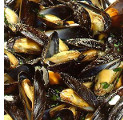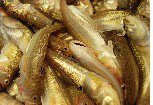The potential for adaptation in a natural Daphnia magna population: broad- and narrow-sense heritability of netreproductive rate under Cd stress at two temperatures
The existence of genetic variability is a key element of the adaptive potential of a natural population to stress. In this study we estimated the additive and non-additive components of the genetic variability of net reproductive rate (R-0) in a natural Daphnia magna population exposed to Cd stress at two different temperatures. To this end, life-table experiments were conducted with 20 parental and 39 offspring clonal lineages following a 2 x 2 design with Cd concentration (control vs. 3.7 mu g Cd/L) and temperature (20 vs. 24 A degrees C) as factors. Offspring lineages were obtained through inter-clonal crossing of the different parental lineages. The population mean, additive and non-additive genetic components of variation in each treatment were estimated by fitting an Animal Model to the observed R-0 values using restricted maximum likelihood estimation. From those estimates broad-sense heritabilities (H-2), narrow-sense heritabilities (h(2)), total (CVG) and additive genetic coefficients of variation (CVA) of R-0 were calculated. The exposure to Cd imposed a considerable level of stress to the population, as shown by the fact that the population mean of R-0 exposed to Cd was significantly lower than in the control at the corresponding temperature, i.e. by 23 % at 20 A degrees C and by 88 % at 24 A degrees C. The latter difference indicates that increasing temperature increased the stress level imposed by Cd. The HA(2) and CVG were significantly greater than 0 in all treatments, suggesting that there is a considerable degree of genetic determination of R-0 in this population and that clonal selection could rapidly lead to increasing population mean fitness under all investigated conditions. More specifically, the HA(2) was 0.392 at 20 A degrees C+Cd and 0.563 at 24 A degrees C+Cd; the CVG was 30.0 % at 20 A degrees C+Cd and was significantly higher (147.6 %) in


 On August 23, 2012 the Ghent University signed
On August 23, 2012 the Ghent University signed